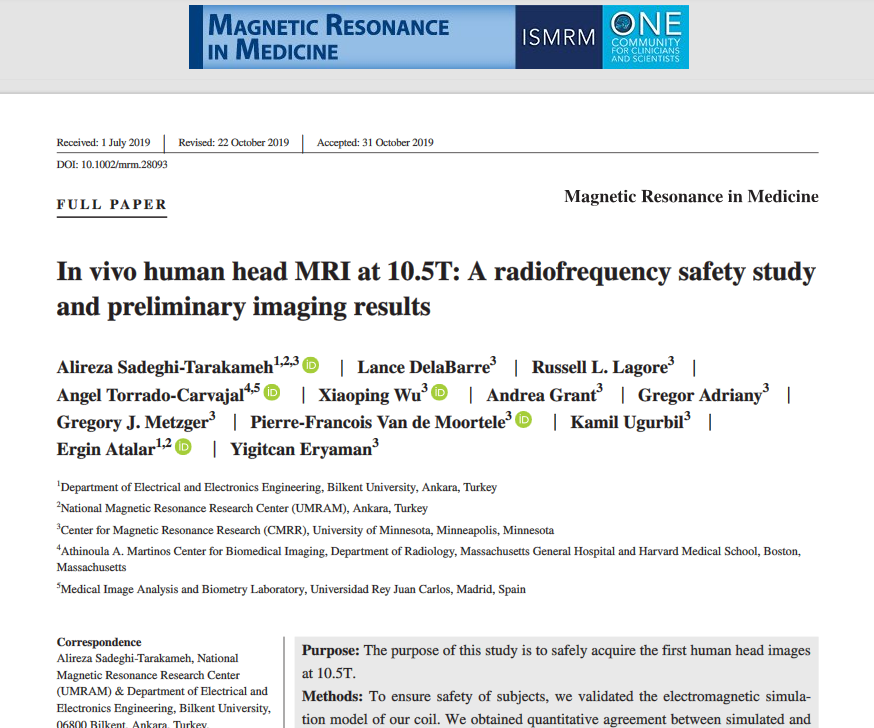Our PhD student Alireza Sadeghi‐Tarakameh, Prof. Dr. Ergin Atalar and our PhD alumni Yiğitcan Eryaman published a paper titled “In vivo human head MRI at 10.5T: A radiofrequency safety study and preliminary imaging results" with Lance DelaBarre, Russell L. Lagore, Angel Torrado‐Carvajal, Xiaoping Wu, Andrea Grant, Gregor Adriany, Gregory J. Metzger, Pierre-Francois Van de Moortele, and Kamil Ugurbil in Magnetic Resonance in Medicine.
Abstract
PURPOSE:
The purpose of this study is to safely acquire the first human head images at 10.5T.
METHODS:
To ensure safety of subjects, we validated the electromagnetic simula-tion model of our coil. We obtained quantitative agreement between simulated and experimental B1+ and specific absorption rate (SAR). Using the validated coil model, we calculated radiofrequency power levels to safely image human subjects. We con-ducted all experiments and imaging sessions in a controlled radiofrequency safety lab and the whole-body 10.5T scanner in the Center for Magnetic Resonance Research
RESULTS:
Quantitative agreement between the simulated and experimental results was obtained including S-parameters, B+1 maps, and SAR. We calculated peak 10 g average SAR using 4 different realistic human body models for a quadrature excita-tion and demonstrated that the peak 10 g SAR variation between subjects was less than 30%. We calculated safe power limits based on this set and used those limits to acquire T2- and T∗2-weighted images of human subjects at 10.5T.
CONCLUSIONS:
In this study, we acquired the first in vivo human head images at 10.5T using an 8-channel transmit/receive coil. We implemented and expanded a previously proposed workflow to validate the electromagnetic simulation model of the 8-channel transmit/receive coil. Using the validated coil model, we calculated radiofrequency power levels to safely image human subjects.
MAGNETIC RESONANCE IN MEDICINE
DOI: 10.1002/mrm.28093
